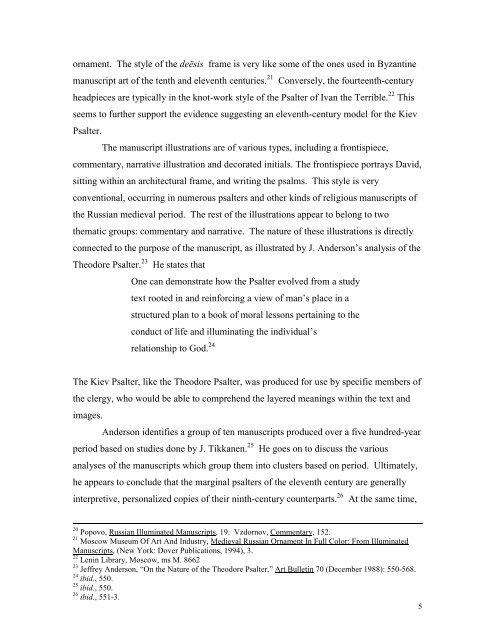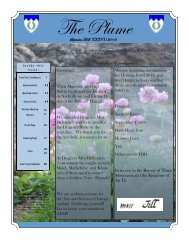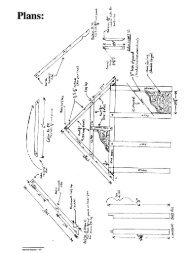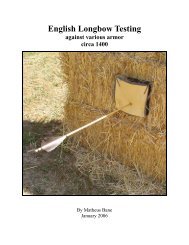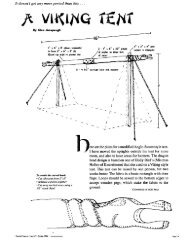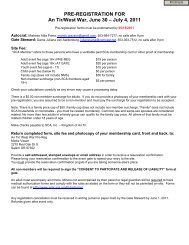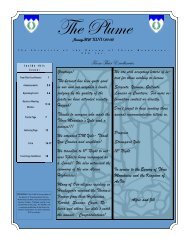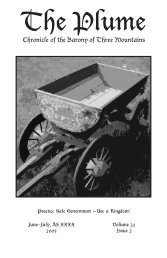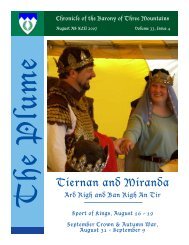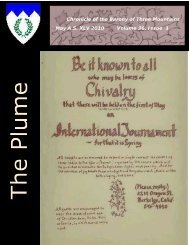The Kiev Psalter of 1397: An Analysis - CurrentMiddleAges.org
The Kiev Psalter of 1397: An Analysis - CurrentMiddleAges.org
The Kiev Psalter of 1397: An Analysis - CurrentMiddleAges.org
Create successful ePaper yourself
Turn your PDF publications into a flip-book with our unique Google optimized e-Paper software.
ornament. <strong>The</strong> style <strong>of</strong> the deësis frame is very like some <strong>of</strong> the ones used in Byzantine<br />
manuscript art <strong>of</strong> the tenth and eleventh centuries. 21 Conversely, the fourteenth-century<br />
headpieces are typically in the knot-work style <strong>of</strong> the <strong>Psalter</strong> <strong>of</strong> Ivan the Terrible. 22 This<br />
seems to further support the evidence suggesting an eleventh-century model for the <strong>Kiev</strong><br />
<strong>Psalter</strong>.<br />
<strong>The</strong> manuscript illustrations are <strong>of</strong> various types, including a frontispiece,<br />
commentary, narrative illustration and decorated initials. <strong>The</strong> frontispiece portrays David,<br />
sitting within an architectural frame, and writing the psalms. This style is very<br />
conventional, occurring in numerous psalters and other kinds <strong>of</strong> religious manuscripts <strong>of</strong><br />
the Russian medieval period. <strong>The</strong> rest <strong>of</strong> the illustrations appear to belong to two<br />
thematic groups: commentary and narrative. <strong>The</strong> nature <strong>of</strong> these illustrations is directly<br />
connected to the purpose <strong>of</strong> the manuscript, as illustrated by J. <strong>An</strong>derson’s analysis <strong>of</strong> the<br />
<strong>The</strong>odore <strong>Psalter</strong>. 23 He states that<br />
One can demonstrate how the <strong>Psalter</strong> evolved from a study<br />
text rooted in and reinforcing a view <strong>of</strong> man’s place in a<br />
structured plan to a book <strong>of</strong> moral lessons pertaining to the<br />
conduct <strong>of</strong> life and illuminating the individual’s<br />
relationship to God. 24<br />
<strong>The</strong> <strong>Kiev</strong> <strong>Psalter</strong>, like the <strong>The</strong>odore <strong>Psalter</strong>, was produced for use by specific members <strong>of</strong><br />
the clergy, who would be able to comprehend the layered meanings within the text and<br />
images.<br />
<strong>An</strong>derson identifies a group <strong>of</strong> ten manuscripts produced over a five hundred-year<br />
period based on studies done by J. Tikkanen. 25 He goes on to discuss the various<br />
analyses <strong>of</strong> the manuscripts which group them into clusters based on period. Ultimately,<br />
he appears to conclude that the marginal psalters <strong>of</strong> the eleventh century are generally<br />
interpretive, personalized copies <strong>of</strong> their ninth-century counterparts. 26 At the same time,<br />
20 Popovo, Russian Illuminated Manuscripts, 19. Vzdornov, Commentary, 152.<br />
21 Moscow Museum Of Art <strong>An</strong>d Industry, Medieval Russian Ornament In Full Color: From Illuminated<br />
Manuscripts, (New York: Dover Publications, 1994), 3.<br />
22 Lenin Library, Moscow, ms M. 8662<br />
23 Jeffrey <strong>An</strong>derson, “On the Nature <strong>of</strong> the <strong>The</strong>odore <strong>Psalter</strong>,” Art Bulletin 70 (December 1988): 550-568.<br />
24 ibid., 550.<br />
25 ibid., 550.<br />
26 ibid., 551-3.<br />
5


